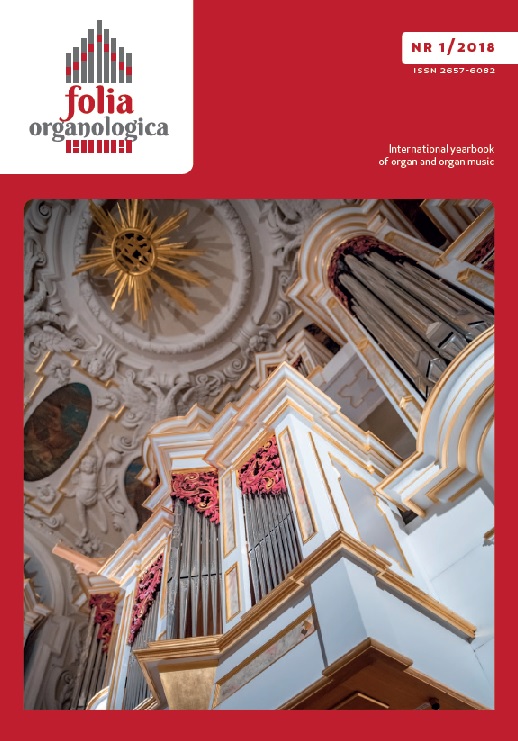Petr Eben a jeho skladby pro varhany. Poznámky k tradici jejich provádění, k interpretaci a jejím parametrům
Petr Eben and His Works for Organ. Comments on the tradition of their performance and interpretation
Author(s): Jaroslav TůmaSubject(s): Music
Published by: Uniwersytet Opolski
Keywords: Petr Eben – composer;interpretation;organ;
Summary/Abstract: The music of the important Czech composer, who would have turned ninety on 22 January 2019 when we commemorated the anniversary of his birth, constitutes one of the most important enhancements of the Czech artistic environment in the world of culture of the latter half of the twentieth century. Petr Eben earned recognition, and his organ music has even been compared with the legacy of Olivier Messiaen. The composer understood the organ as the instrument to which his fate was bound. By the age of ten, he already held the position of organist at Saint Vitus’s Church in Český Krumlov. He would seat himself at the big threemanual instrument in the early evening, locked inside the church, leaving time and the world behind during his lengthy improvisations. “I think it was then and there that my whole personality took shape.”Perhaps every organist was playing Eben’s works in my student days. After the composer’s death in 2007, however, interest in his music declined somewhat, but I still keep returning to his compositions with growing frequency, especially to certain of his works. At the same time, I am aware of how in my thinking, and I definitely am not alone in having this experience, as time goes by there is a maturing not only of my image of the works themselves but also of the possible, desirable, and in a sense perhaps even modern manner of their interpretation, especially with respect to the choice of ideal instruments. Musicians often base the success of their performances on the depth and intensity of experience, and especially on spontaneous, momentary inspiration on stage. Only a few are so grounded in reason that they always think through how they will perform a work down to the last detail in advance and never deviate from that line in the least when playing. In the long run, however, a combination of these two approaches tends to be most successful, so that besides spontaneity, there is a constant consideration of relationships between formal and tectonic structures and harmonic and thematic contexts, leading to a clarification of details and a continually improving and more precise rendition of the whole, and this then begins to be reflected in the formation of a kind of tradition of the performing of the works. That tradition ultimately does not tend to be the result of the activity of a single performer, but instead it arises from a long series of performances of the works in question by various interpreters.A performer should master all of the basic parameters of a work and its interpretation. A melody must always remain a melody, and a phrase must always be a phrase. The relationships between individual sections must be clear and comprehensible to an audience member sitting and listening far away from the organ in the nave of the church or in the last row of the concert hall. The ear must be capable of perceiving every single note of each moving sequence of fast tones. The vertical structure must be equally comprehensible, so every chord needs to be played so that it can be deciphered even from a great distance. At the same time, however, Eben’s music must retain its overall character. As the composer said: “In my music, there is far more drama than meditation.”Today, learning and performing any of Petr Eben’s greatest works is a real challenge for organists. In some cases, I encounter interpretations that appear to have come into being without continuity and that do not proceed along the lines that have been tried and proven, but at the same time, it seems to me that they go to the heart of the matter and that they respect the composer’s deepest intentions and motivations. From my perspective, this may be the thing that shows most clearly that Petr Eben’s organ music definitely will not disappear into the ash heap of history.
Journal: Folia Organologica. International yearbook of organ and organ music
- Issue Year: 2018
- Issue No: 1
- Page Range: 75-81
- Page Count: 7
- Language: English, Czech

